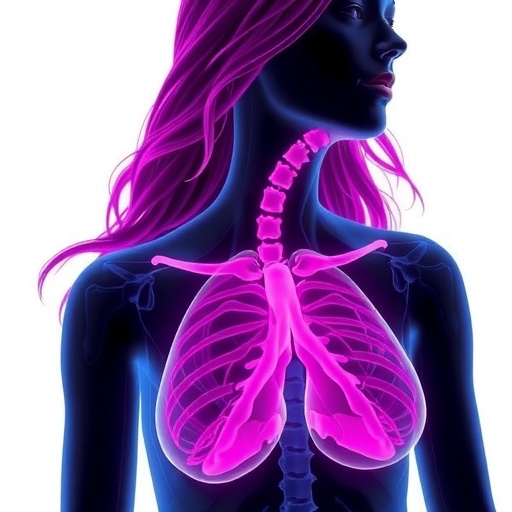Breast cancer remains the most frequently diagnosed malignancy among women worldwide, posing a significant threat to public health despite ongoing advances in detection and treatment. Approximately 5 to 10% of breast cancer cases stem from inherited genetic mutations, with alterations in the breast cancer susceptibility gene 1 (BRCA1) representing a major hereditary factor. BRCA1 functions as a vital tumor suppressor, and mutations within this gene profoundly increase an individual’s risk of developing breast and ovarian cancers. Yet, the precise biological mechanisms by which BRCA1 mutations contribute predominantly to breast and ovarian tumorigenesis, rather than other tissues where the gene is also expressed, have remained enigmatic. A groundbreaking study published in BMC Cancer in 2025 by Derismahafi et al. provides crucial insights into the molecular interplay linking BRCA1 mutations, estrogen signaling, and oxidative stress regulation.
The research sheds new light on the role of nuclear factor erythroid-2-related factor 2 (NRF2), a transcription factor that orchestrates the cellular defense against oxidative stress by activating genes involved in antioxidant responses. Estrogen, a key hormone implicated in breast tissue development and cancer progression, has been proposed to influence the survival of breast epithelial cells deficient in functional BRCA1. It is hypothesized that estrogen may enhance NRF2 activity, thereby promoting cellular resilience in an environment of heightened oxidative stress—a scenario that could underpin malignant transformation. This investigation rigorously examines this proposition by analyzing gene expression and protein markers in breast tissue samples from both BRCA1 mutation carriers and non-mutated controls.
The authors meticulously collected 70 formalin-fixed, paraffin-embedded (FFPE) tissue specimens encompassing both tumor and adjacent non-tumoral areas from 15 patients harboring BRCA1 mutations and compared them to samples from 20 non-mutated individuals. This paired-sample approach enabled a finely controlled comparative analysis, minimizing inter-individual variation and allowing a clearer association between genetic status and molecular alterations. Quantitative real-time polymerase chain reaction (qRT-PCR) was employed to measure NRF2 mRNA levels, offering a sensitive and quantitative assessment of gene expression changes within the tissues.
Interestingly, the study also adopted an indirect strategy to evaluate estrogen activity by examining the expression of focal adhesion kinase (FAK), a known mediator of estrogen signaling pathways linked to cell survival and migration. Immunohistochemical (IHC) staining for FAK enabled visualization and relative quantification of this protein within breast tissue architecture. By integrating molecular and histological techniques, the researchers provided a comprehensive picture of the interrelations between BRCA1 mutation status, NRF2 expression, and estrogen-driven signaling.
The findings reveal a significant overexpression of NRF2 in breast tumors from BRCA1-mutated patients compared to tumors from non-mutated controls, with a p-value of 0.036 indicating strong statistical confidence. This suggests that upregulation of NRF2 is a distinct characteristic of BRCA1-mutated breast cancers, potentially reflecting an adaptive response to elevated oxidative stress encountered in these cells. Contrary to expectations, no notable difference was detected in FAK expression between the two groups, implying that estrogen’s influence on FAK-mediated pathways may not be markedly altered by BRCA1 mutations in tumor tissues.
These data position NRF2 as a potential key molecular player in the pathogenesis of BRCA1-associated breast cancer, possibly facilitating tumor cell survival and progression via enhanced antioxidant capacity. Understanding this adaptive mechanism provides a compelling rationale for exploring targeted interventions that disrupt NRF2 signaling in high-risk populations, potentially attenuating the oncogenic resilience of BRCA1-mutated cells. The absence of differential estrogen-FAK interaction suggests that NRF2 activation may occur independently of canonical estrogen signaling routes, highlighting the complexity of hormone-tumor biology in hereditary breast cancers.
Further implications of this study extend to early cancer detection and chemoprevention, where monitoring NRF2 expression patterns might aid in risk stratification of BRCA1 mutation carriers. Moreover, the identification of NRF2 as a biomarker opens possibilities for personalized therapeutic approaches, whereby selective NRF2 inhibitors or modulators could be employed alongside existing treatments to enhance efficacy and prevent tumor recurrence.
The work underscores the critical need to dissect the molecular milieu of hereditary breast cancers, moving beyond BRCA1 gene status to unravel downstream effectors like NRF2 that orchestrate cellular fate decisions under stress conditions. This nuanced understanding fosters the development of precision medicine pathways crafted to intercept cancer evolution at its oxidative stress nexus.
In summary, the study by Derismahafi and colleagues constitutes a significant advance in the breast cancer field, elucidating a previously underappreciated facet of BRCA1 mutation-driven tumorigenesis. By spotlighting NRF2 overexpression as a hallmark of mutated cancers and decoupling estrogen’s role from FAK expression changes, the research delineates new avenues for scientific inquiry and clinical translation. As breast cancer remains a global health challenge, such molecular insights are invaluable for devising next-generation strategies tailored to genetically predisposed populations.
Future research may focus on validating these findings across larger cohorts and diverse ethnic groups while exploring additional estrogen-related pathways potentially interacting with NRF2. Emphasizing in vivo functional studies and the development of NRF2-targeted agents could accelerate the translation of molecular discoveries into impactful treatments. Ultimately, the convergence of genetic, hormonal, and oxidative stress factors unveiled in this study embodies the complexity and promise of modern oncology research.
The groundbreaking uncovering of NRF2’s distinct role in BRCA1-mutated breast cancer not only enriches fundamental cancer biology but also holds profound clinical significance. Highlighting antioxidant defense mechanisms as pivotal survival strategies for BRCA1-deficient cells underlines the intricate adaptive landscape cancer cells navigate. By delineating these mechanisms with precision, the study paves the way toward a future where hereditary breast cancers can be more effectively managed through tailored molecular targeting, improving outcomes for thousands of patients worldwide.
Subject of Research: The role of NRF2 expression and estrogen function in BRCA1-mutated breast cancer.
Article Title: NRF2 expression level and estrogen function in BRCA1-mutated breast cancer.
Article References:
Derismahafi, Z., Farhud, D., Razavirad, A. et al. NRF2 expression level and estrogen function in BRCA1-mutated breast cancer. BMC Cancer 25, 1622 (2025). https://doi.org/10.1186/s12885-025-14781-x
Image Credits: Scienmag.com




